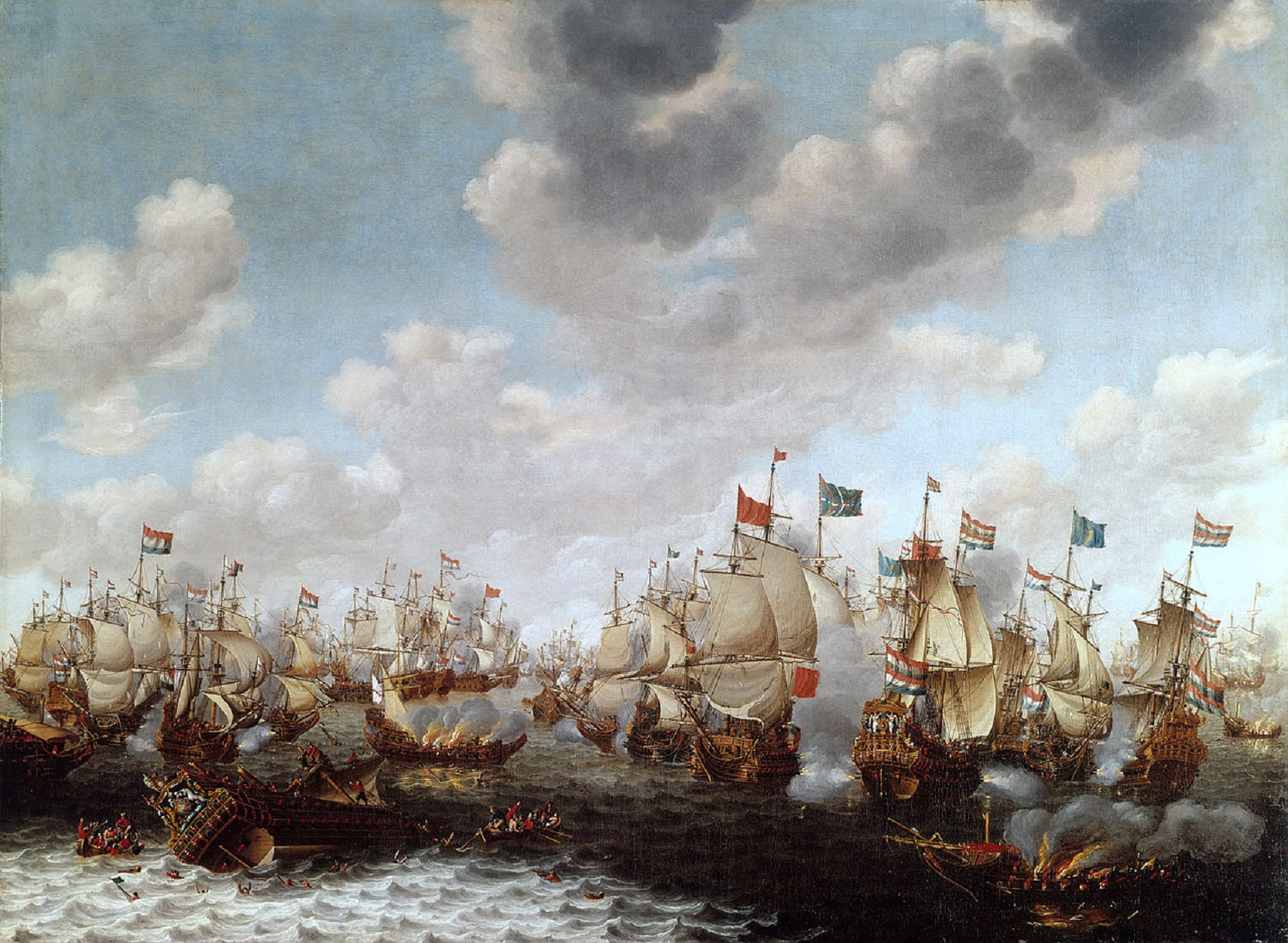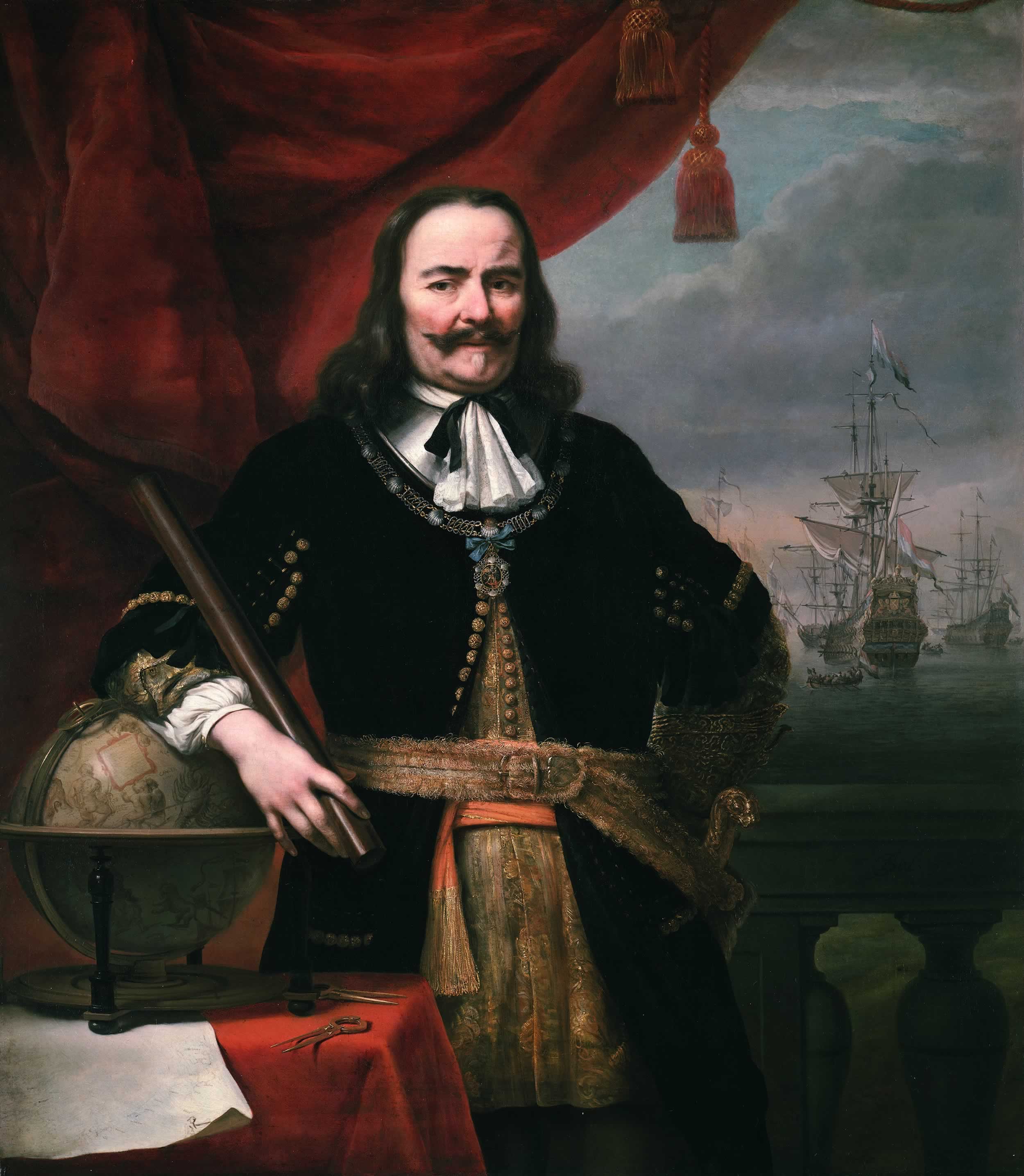|
Gerard Brandt
Gerard Brandt (25 July 1626, Amsterdam – 12 October 1685, Amsterdam) was a Dutch preacher, playwright, poet, church historian, biographer and naval historian. A well-known writer in his own time, his works include a ''Life of Michiel de Ruyter'' (1687, ''Het Leven en bedryf van den Heere Michiel de Ruiter'' - an important source on the admiral's life) and a ''Historie der vermaerde zee- en koopstadt Enkhuisen'' (1666, ''Geschiedenis van Enkhuizen'' - still an important source for that city's early history). Life Brandt was the son of the clockmaker Gerard Brandt and his wife Neeltje Jeroens. Aged 17 Gerard junior wrote the play ''De Veinzende Torquatus'', later put on in the Amsterdamse Schouwburg, of which his father was regent. When he later became a well-known preacher and serious scholar, he did not want his youthful works and errors to be remembered. He was best known for his "grafrede" on Pieter Cornelisz. Hooft in 1647, a translation of Jacques Du Perron's eulogy o ... [...More Info...] [...Related Items...] OR: [Wikipedia] [Google] [Baidu] |
Gerard Brandt
Gerard Brandt (25 July 1626, Amsterdam – 12 October 1685, Amsterdam) was a Dutch preacher, playwright, poet, church historian, biographer and naval historian. A well-known writer in his own time, his works include a ''Life of Michiel de Ruyter'' (1687, ''Het Leven en bedryf van den Heere Michiel de Ruiter'' - an important source on the admiral's life) and a ''Historie der vermaerde zee- en koopstadt Enkhuisen'' (1666, ''Geschiedenis van Enkhuizen'' - still an important source for that city's early history). Life Brandt was the son of the clockmaker Gerard Brandt and his wife Neeltje Jeroens. Aged 17 Gerard junior wrote the play ''De Veinzende Torquatus'', later put on in the Amsterdamse Schouwburg, of which his father was regent. When he later became a well-known preacher and serious scholar, he did not want his youthful works and errors to be remembered. He was best known for his "grafrede" on Pieter Cornelisz. Hooft in 1647, a translation of Jacques Du Perron's eulogy o ... [...More Info...] [...Related Items...] OR: [Wikipedia] [Google] [Baidu] |
Canon Of Dutch Literature
Canon or Canons may refer to: Arts and entertainment * Canon (fiction), the conceptual material accepted as official in a fictional universe by its fan base * Literary canon, an accepted body of works considered as high culture ** Western canon, the body of high culture literature, music, philosophy, and works of art that is highly valued in the West * Canon of proportions, a formally codified set of criteria deemed mandatory for a particular artistic style of figurative art * Canon (music), a type of composition * Canon (hymnography), a type of hymn used in Eastern Orthodox Christianity. * ''Canon'' (album), a 2007 album by Ani DiFranco * ''Canon'' (film), a 1964 Canadian animated short * ''Canon'' (game), an online browser-based strategy war game * ''Canon'' (manga), by Nikki * Canonical plays of William Shakespeare * ''The Canon'' (Natalie Angier book), a 2007 science book by Natalie Angier * ''The Canon'' (podcast), concerning film Brands and enterprises * Cano ... [...More Info...] [...Related Items...] OR: [Wikipedia] [Google] [Baidu] |
Lucretia Wilhelmina Van Merken
Lucretia Wilhelmina van Merken (21 August 1721 – 19 October 1789) was a Dutch poet and playwright. Born in Amsterdam, she began writing occasional poetry and in her early twenties had published her first tragedy. Influenced by the Enlightenment, her tragedies were classicist in style and proved to be popular, being performed all over the country. She wrote an ode in French for George Washington, and sent it to him, and for the revised Dutch version of the Book of Psalms she provided seventeen of the psalms. Biography Lucretia van Merken was born to fur trader Jacob van Merken (1691–1754) and Susanna Wilhelmina Brandt (1687–1759),van Logchem a granddaughter of historian and poet |
Facsimile
A facsimile (from Latin ''fac simile'', "to make alike") is a copy or reproduction of an old book, manuscript, map, Old master print, art print, or other item of historical value that is as true to the original source as possible. It differs from other forms of reproduction by attempting to replicate the source as accurately as possible in scale, color, condition, and other material qualities. For books and manuscripts, this also entails a complete copy of all pages; hence, an incomplete copy is a "partial facsimile". Facsimiles are sometimes used by scholars to research a source that they do not have access to otherwise, and by museums and archives for media preservation and Art conservation and restoration, conservation. Many are sold commercially, often accompanied by a volume of commentary. They may be produced in limited editions, typically of 500–2,000 copies, and cost the equivalent of a few thousand United States dollars. The term "fax" is a shortened form of "facsimile" ... [...More Info...] [...Related Items...] OR: [Wikipedia] [Google] [Baidu] |
Willem Baudartius
Willem Baudaert or Wilhelmus Baudartius (13 February 1565 in Deinze, Flanders, to 15 December 1640 Zutphen), born Willem Baudart, was a Dutch theologian. Baudartius College, a Christian secondary school in Zutphen, is named after him. He was the maternal grandfather of Dutch New Netherland colonist and mayor of New York City Wilhelmus Beekman. Life Born to Protestant parents in Deinze, Flanders and a fervent counter-remonstrant, Baudartius left the Netherlands on the Duke of Alva's arrival, and landed in England at Sandwich. He studied at Canterbury as well as on the continent at Ghent, Leiden, Franeker, and Heidelberg. He served as a preacher at Kampen (1593), Lisse (1596), and Zutphen (until 1640). Highly knowledgeable in Hebrew, he was asked to take part in the Statenvertaling translation of the Bible. Baudartius was a student under David Pareus, a Professor of Theology at Heidelberg University from 1573 until his death. His colleague from 1589 to 1596 was Jacobus Kimmedonc ... [...More Info...] [...Related Items...] OR: [Wikipedia] [Google] [Baidu] |
Protestant Reformation
The Reformation (alternatively named the Protestant Reformation or the European Reformation) was a major movement within Western Christianity in 16th-century Europe that posed a religious and political challenge to the Catholic Church and in particular to papal authority, arising from what were perceived to be errors, abuses, and discrepancies by the Catholic Church. The Reformation was the start of Protestantism and the split of the Western Church into Protestantism and what is now the Roman Catholic Church. It is also considered to be one of the events that signified the end of the Middle Ages and the beginning of the early modern period in Europe.Davies ''Europe'' pp. 291–293 Prior to Martin Luther, there were many earlier reform movements. Although the Reformation is usually considered to have started with the publication of the '' Ninety-five Theses'' by Martin Luther in 1517, he was not excommunicated by Pope Leo X until January 1521. The Diet of Worms of May 1521 ... [...More Info...] [...Related Items...] OR: [Wikipedia] [Google] [Baidu] |
London
London is the capital and largest city of England and the United Kingdom, with a population of just under 9 million. It stands on the River Thames in south-east England at the head of a estuary down to the North Sea, and has been a major settlement for two millennia. The City of London, its ancient core and financial centre, was founded by the Romans as '' Londinium'' and retains its medieval boundaries.See also: Independent city § National capitals The City of Westminster, to the west of the City of London, has for centuries hosted the national government and parliament. Since the 19th century, the name "London" has also referred to the metropolis around this core, historically split between the counties of Middlesex, Essex, Surrey, Kent, and Hertfordshire, which largely comprises Greater London, governed by the Greater London Authority.The Greater London Authority consists of the Mayor of London and the London Assembly. The London Mayor is distinguished fr ... [...More Info...] [...Related Items...] OR: [Wikipedia] [Google] [Baidu] |
Pieter Cornelisz Van Soest
Pieter Cornelisz van Soest (born c. 1600–1620, flourished c. 1640–67) was a Dutch marine artist, especially prolific in battle-pieces. Biography Little is known about him. He was the son of Cornelis Pietersz van Soest,Pieter Cornelis van Soest at the ''ECARTICO'' website and in 1642 he became of Amsterdam where he was recorded until 1667. In April 1643, as a painter living on the Nieuwezijds Voorburgwal ...
[...More Info...] [...Related Items...] OR: [Wikipedia] [Google] [Baidu] |
Ludolf Bakhuysen
Ludolf BakhuizenLudolf Bakhuizen at the (28 December 1630 – 7 November 1708) was a German-born painter, draughtsman, calligrapher and printmaker. He was the leading Dutch painter of maritime subjects after and [...More Info...] [...Related Items...] OR: [Wikipedia] [Google] [Baidu] |
Willem Van De Velde The Younger
Willem van de Velde the Younger (18 December 1633 (baptised)6 April 1707) was a Dutch Republic, Dutch marine painter, the son of Willem van de Velde the Elder, who also specialised in maritime art. His brother, Adriaen van de Velde, was a landscape painter. Biography Willem van de Velde was baptised on 18 December 1633 in Leiden, Holland, Dutch Republic. He was instructed by his father, and around 1650 by Simon de Vlieger, a marine painter of repute at the time, who worked around Weesp. He was also influenced by the work of the Dutch artist Jan van de Cappelle, who excelled at painting cloudy skies, the clouds often being reflected in the calm waters. Willem was married twice, in 1652 with Petronella Le Maire coming from Weesp, but divorced. At that time he lived at Prins Hendrikkade, Buitenkant and likely with a view on the harbour and the Amsterdam Admiralty; from 1655 one of his neighbors was Michiel de Ruyter. In 1656 he married Magdalena Walravens, the daughter of a skippe ... [...More Info...] [...Related Items...] OR: [Wikipedia] [Google] [Baidu] |
Dutch Ship De Zeven Provinciën (1665)
''De Zeven Provinciën'' (Dutch: "the seven provinces") was a Dutch ship of the line, originally armed with 80 guns. The name of the ship refers to the seven autonomous provinces that made up the Dutch Republic in the 17th century. The vessel was built in 1664-65 for the Admiralty of de Maze in Rotterdam by the master shipbuilder Salomon Jansz van den Tempel. History The ship served as Admiral Michiel de Ruyter's flagship during the Second Anglo-Dutch War, taking part in the Dutch victory at the Four Days Fight and the defeat at the St. James's Day Battle, and acting as a command post as well as blockading the River Thames during the Raid on the Medway. The vessel performed well throughout the war, though it was partially dismasted during the Four Days Fight. De Ruyter used ''De Zeven Provinciën'' as his flagship during the Third Anglo-Dutch War of 1672-1673. The ship served in all four major battles against the combined English and French fleet, fighting in the Batt ... [...More Info...] [...Related Items...] OR: [Wikipedia] [Google] [Baidu] |
Four Days Battle
The Four Days' Battle, also known as the Four Days' Fight in some English sources and as Vierdaagse Zeeslag in Dutch, was a naval battle of the Second Anglo-Dutch War. Fought from 1 June to 4 June 1666 in the Julian or Old Style calendar that was then used in England, in the southern North Sea, it began off the Flemish coast and ended near the English coast. It remains one of the longest naval engagements in history. Dutch accounts referred to its dates as 11 June to 14 June 1666 by using the New Style calendar. The Dutch inflicted significant damage on the English fleet, which lost ten ships in total, with over 1,000 men killed, including two vice-admirals, Sir Christopher Myngs and Sir William Berkeley, and almost 2,000 English were taken prisoner including a third vice-admiral, George Ayscue. Dutch losses were four ships destroyed by fire and over 1,550 men killed, including Lieutenant Admiral Cornelis Evertsen, Vice Admiral Abraham van der Hulst and Rear Admiral Frederik ... [...More Info...] [...Related Items...] OR: [Wikipedia] [Google] [Baidu] |

.jpg)
.jpg)



